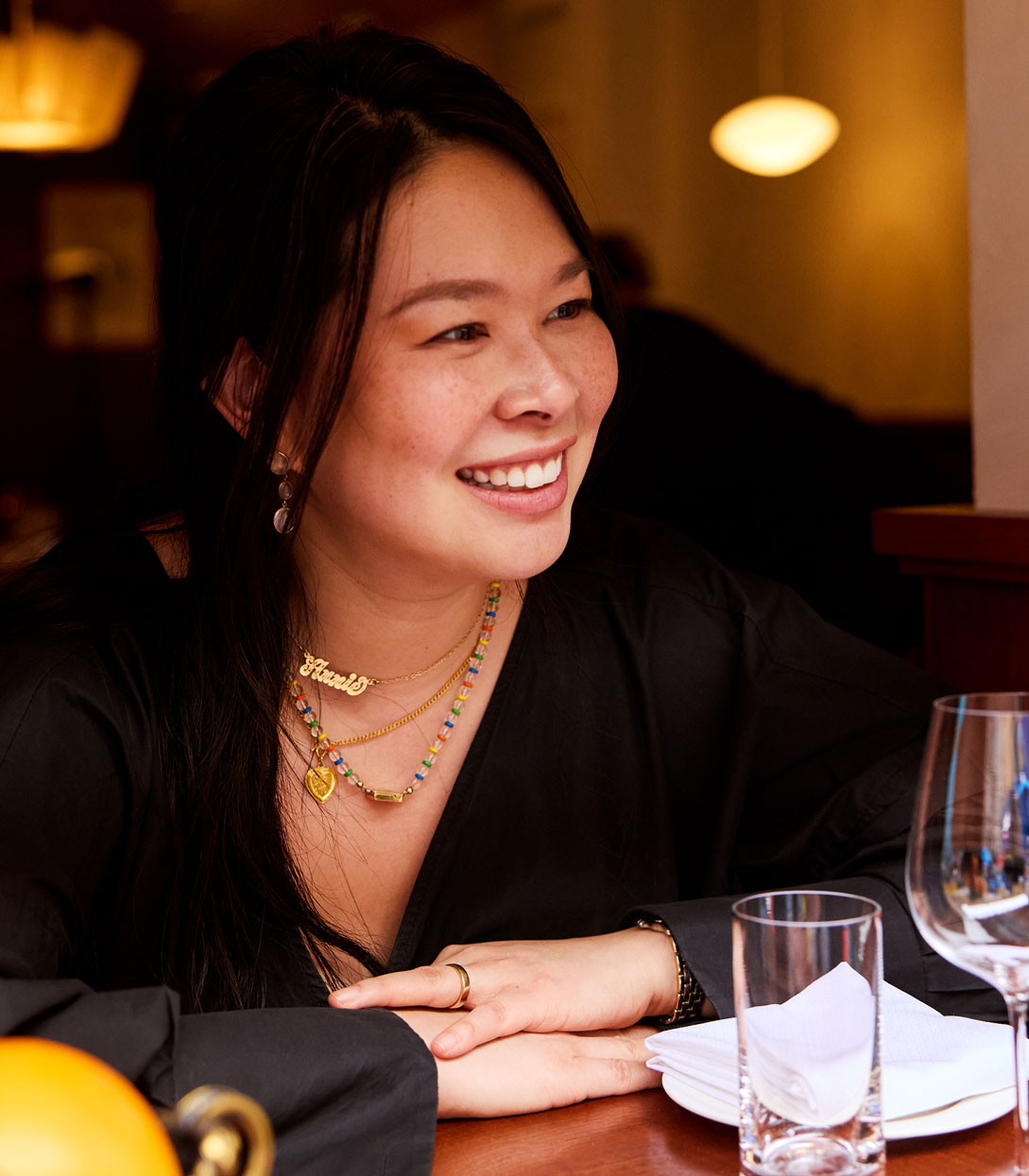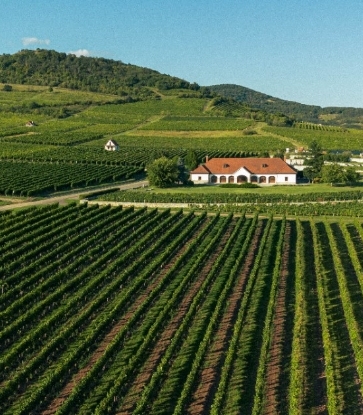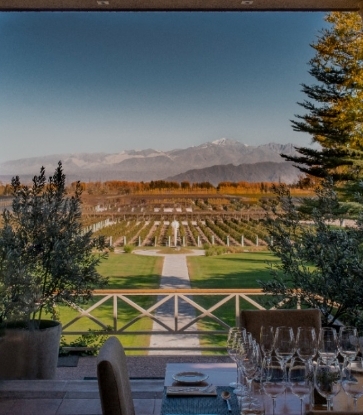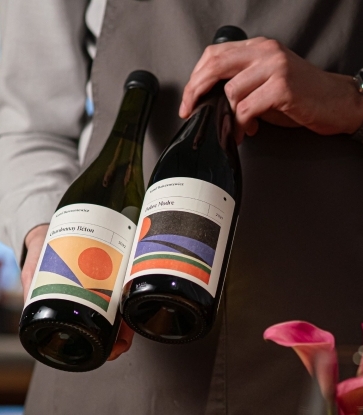On January 1, Julie Cavil took on the role of Cellar Master at Krug. Cavil began working at Krug 13 years ago, and outgoing Cellar Master Eric Lebel will be staying on in the capacity of Deputy Direct of Maison Krug, so this is hardly revolutionary news. But the appointment of a new chef des caves is nonetheless an important moment in the history of any Champagne house. To learn more about the woman who has landed one of Champagne’s most coveted positions and about the future of Maison Krug, William Kelley of The Wine Advocate sat down with Cavil for her first interview in her new capacity.
William Kelley: You’ve had an unusual career for a chef des caves. How did you end up in the wine world? Were you born into a family of wine lovers?
Julie Cavil: I’m not from Reims nor even Champagne, and if you’d told me 15 years ago that I would be living in Champagne, that I’d be an oenologist, and that I’d be working for Krug, I truly wouldn’t have believed you. So, working in wine represented a revolution in my life. I’m from the center region of France, and, yes, from a family of wine lovers, so I was certainly aware of wine—but at age 17, when I had to choose a career, I opted to go to business school before working for six years in public relations in Paris. At 17, my palate was still comparatively undeveloped. But with time, I became passionate about wine—reading books, attending tastings with professionals. And I was also thinking about leaving Paris, about how to construct a more balanced professional life. You see, the world of public relations is inherently ephemeral, with a rapid turnover in projects and personnel, whereas the world of wine, it’s the opposite: it takes time, it’s durable. So in fact, what I was looking for in my professional life was perfectly aligned with my growing passion for wine. I duly went to Champagne and went back to school, despite meeting with a somewhat skeptical reception—“she’s too old,” “she has children already,” and so on. Indeed, in the end, that only motivated me further to prove myself and confound stereotypes. I did internships at Moët & Chandon, with Dom Pérignon, and then I joined the team at Krug in 2006.
WK: It’s true that the worlds of public relations and wine couldn’t be more different—after all, with the just-released 2006 Krug, we are finally getting to taste the Maison’s work of over a decade ago—but do your experiences in your former career inform what you do today in any respect?
JC: Having the experience of working in a totally different field perhaps gives me a different perspective on Champagne—it’s easier for me to step back and see things in context, and perhaps sometimes to reconsider them. It isn’t easy to put a finger on it. But above all I simply take pleasure in working in a much more long-term business; because, in a sense, I have three jobs—the first is to recreate Grande Cuvée every year; but looking back in time, I also have to preserve the institutional memory of Maison Krug; and looking forward, I also have to think about how to transmit that heritage, everything we’ve learned and continue to learn, to my successors—even if I’ve only just assumed my new role. So, I have to think about the past and the future as well as the present. And perhaps that’s a reaction against my prior career.
WK: The Grande Cuvée, in its various manifestations, has always been Krug’s emblematic bottling, the bottling that expresses the house style to the fullest. How would you characterize it?
JC: Above all, the Grande Cuvée is what we call “the founder’s dream:” Joseph Krug’s vision to recreate every year, by blending, the fullest expression of what Champagne has to offer; and that’s what we try to perpetuate. But what does that mean? It has to be a charismatic wine that’s exciting from the first glass—its flavors, its textures, its colors. It has to be capable of pairing with all sorts of food, of reconciling paradoxes in the glass: it must be expressive and mature, but also fresh and vivacious. When we say Krug Grande Cuvée, it’s a blend of 150 to 200 different wines, from 10 to 15 different vintages. It takes a minimum of 20 years to make one bottle. I think that makes it clear—you have the fresh fruit of the recent harvest, the dried and preserved fruits of the older vintages in the blend, and the Grande Cuvée encompasses them all. Beyond that, I’m delighted when someone puts their nose in a glass of Krug for the first time and says, “that’s different!,” and wants to take a second sniff. And of course, even if it’s a blend from across the region, it’s a homage to the terroirs of Champagne, with every parcel kept separate during vinification and maturation, and assembled in the most complementary way.

WK: Krug’s style is quite pronounced. How do you make sense of the relationship between a strong house style and the expression of Champagne’s terroirs?
JC: Terroir finds its purist voice in the wines we make from the Clos du Mesnil and the Clos d’Ambonnay. They’re pure expressions of two sites—and two cépages, Chardonnay and Pinot Noir—in all their individuality. But we don’t seek to express terroir simply for its own sake. Consider one of our parcels, where the soil changes from one end to the other very markedly. We always used to vinify the parcel as a whole, but now we’re more inclined to make two different wines from the two different parts of the parcel. Because that way we can bring out the maximal expression of both. In other words, like I said, we don’t seek to express terroir for its own sake; we simply seek to do justice to each site, to make the best possible wine from each site. And that gives us the highest-quality and most characterful components with which to produce the best possible blend.
WK: If you had to pick a bottle—or bottles—of Krug that have particularly shaped your understanding of the house, which would they be?
JC: What makes the biggest impression on me every year is when we make the blends, on the one hand, the Grande Cuvée—trying to express the best of Champagne—and on the other hand, the vintage, trying to express the personality of the year to the fullest. Working on the two side by side is unique, and every time it’s fascinating.
As far as particular vintages are concerned, I have a weakness for the 1995. I think it’s a little in the shadow of the 1996, but the 1995 has a classical balance, with wonderful freshness, that I like very much.
And among the very oldest, 1915. Why? My first job at Krug was to take an inventory of the wine library, noting all the particulars of each bottle one by one. And it happened that, while I was working on this project, the cork of one of the bottles came out. So, I had 15 minutes to assemble the tasting committee, including the fifth generation of the family represented by Remi Krug, as well as Olivier Krug and Maggie Henríquez. And I served them the wine blind, giving them some time to reflect in silence. It was very amusing, because in the end everyone said it was something from the 1950s or 1960s, when in fact it was 1915. The aromas were very concentrated, and on the palate, it was still strikingly fresh, and that’s why everyone thought it was younger. It was a great moment. What I learned working with Krug’s old wines was to be humble, because sometimes even the bottles that didn’t look promising in terms of level and preservation turned out to be fabulous and remarkably long-lived.
WK: What makes Krug special?
JC: That’s not easy to summarize! But what makes us a little different is that we produce a prestige Cuvée every year—because that’s what Joseph Krug defined as the objective in his notebooks all those years ago—with no hierarchy between the non-vintage and the vintage bottlings. And so, anyone who likes Krug doesn’t have to wait for a “great” vintage: they can have the experience with every bottle. What else? From an oenological perspective, our obsession is to preserve the character of each parcel throughout the winemaking and maturation process, so we have at our disposal the richest and most varied palette with which to produce our blends. Barrel fermentation is the only way we can do that, the only way we can vinify every tiny parcel separately. And certainly, barrel fermentation gives a patina to the wines of Maison Krug. I wouldn’t say, honestly, that it’s better or worse than stainless steel—it’s a choice, a style. But perhaps you could say it’s like the difference between hi-fi and stereo: barrel fermentation, like hi-fi, expresses everything more intensely—the good as well as the less good. And it can be more complicated on a technical level. But I also think the fact that our wines are exposed to oxygen early in their lives means that they are less susceptible to oxidation later, which helps to explain Krug’s unusually long aging potential—almost indestructible when stored in the best conditions.
WK: Being a chef des caves for a house like Krug is a position of immense responsibility and imposes a lot of pressures. Does it leave you much creative freedom?
JC: Well, this new position isn’t a radical transformation: I’ve been at Krug for 13 years, and Eric Lebel and I naturally got on well; Eric opened the doors of his universe to me. So, the first thing to say is that I’m prepared—and, of course, Eric will still be at Krug, just a little more backstage. That’s very reassuring.
The other thing to know is that the important decisions aren’t made by one person—that would really be hard. The tasting committee, for me, is very important. I’m very proud of our group, it’s talented, humble and experienced, with a variety of perspectives and palates that all bring something to the table and help us get closer to our objective.
And beyond that, the prospect that excites me certainly isn’t to change everything—that would be easy. Rather, it’s to attain the same level of excellence, year after year, vintage after vintage—that’s much more challenging, more motivating, and that’s what I want to do. That said, we do have to question what we do every year: there is no recipe, each year is a blank slate. And I do want to work—and in fact I have been working—on studying our parcels, understanding them better, dividing them more intelligently to farm them accordingly and to vinify them accordingly. So, you could say precision viticulture is one thing that excites me. As does a move towards sustainability—and that includes not just the vineyards but taking care of our workers.
WK: That brings me to the greatest challenge facing contemporary Champagne: how to produce wine in a more sustainable manner?
JC: Well it’s a project we’ve been working on for some time already, and there are lots of things to do. We’re looking at how we can be more precise in tracking ripening throughout our parcels as we approach harvest, as getting the date right is more and more critical: we don’t like to correct the must once it’s pressed, so we have to pick at the right moment. At a more long-term level, we’re looking at massale selections that might help to buffer the impact of climate change; at pruning methods, where we have to re-educate our workers; as well as how to promote deeper rooting. We’ve used zero herbicides for several years now, and even if we’re not organic or biodynamic, we’re as close to organic as we can be. But our view, for the time being, is that sometimes it’s still necessary to intervene to save the harvest. There are aspects of biodynamics that interest us and we’re studying them. In short, we remain open-minded and curious, exposing ourselves to other ideas. For example, it’s a small thing, but we’ve found that grazing sheep in the vines can bring advantages in terms of biodiversity. So, we’re experimenting with that in one of our parcels. And it goes beyond simply using or not using synthetic products.
WK: And what is the greatest challenge facing Krug today?
JC: It’s to be able to continue to make Grande Cuvée every year. That’s to say, to have all the prerequisites to produce the fullest expression of Champagne. So, it’s a huge challenge, it’s very stimulating, it’s very motivating. As far as I’m concerned, I have the best job in the world! And I’m very proud to be able to take the baton from Eric, and by extension his predecessors, and to be working alongside an extraordinary team.
Hero image by Dominique Silberstein.




















